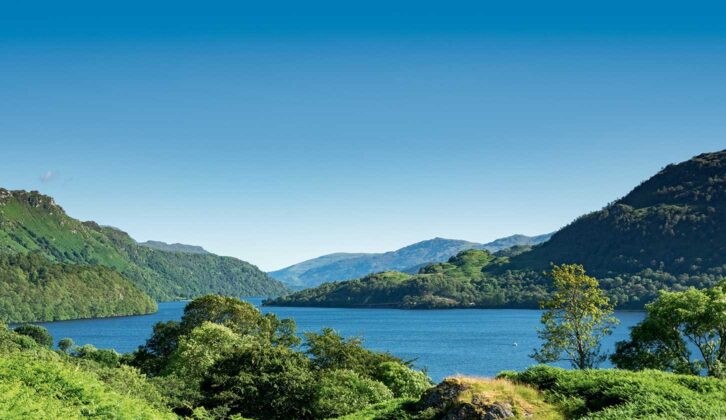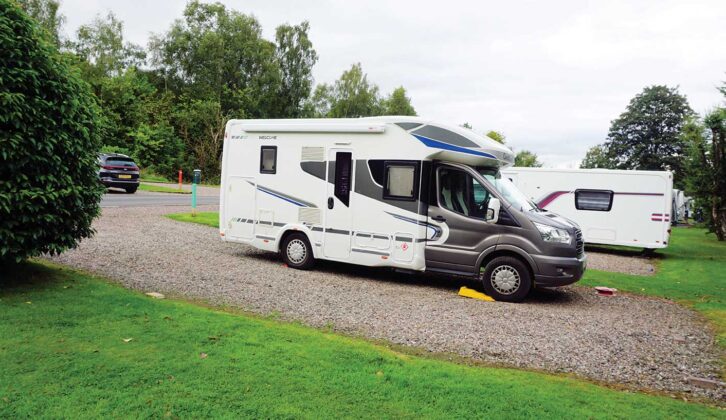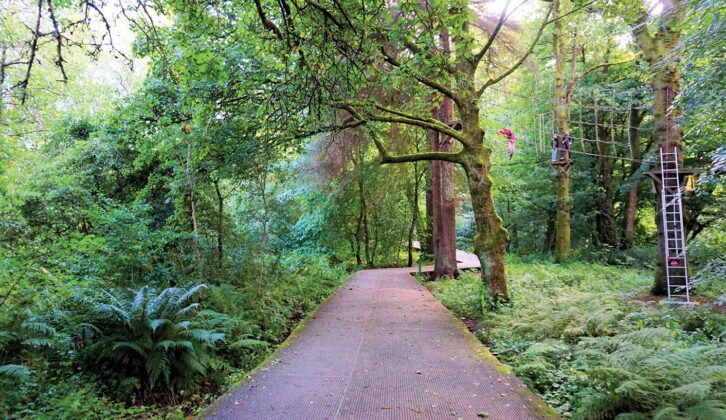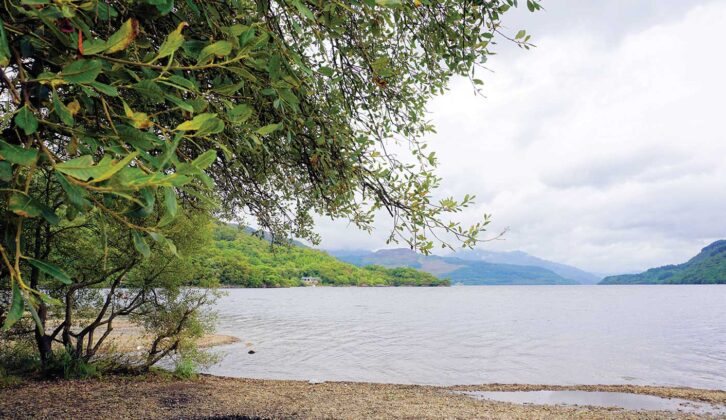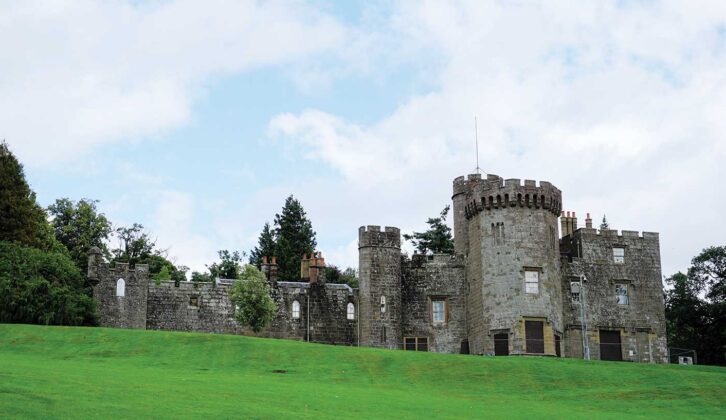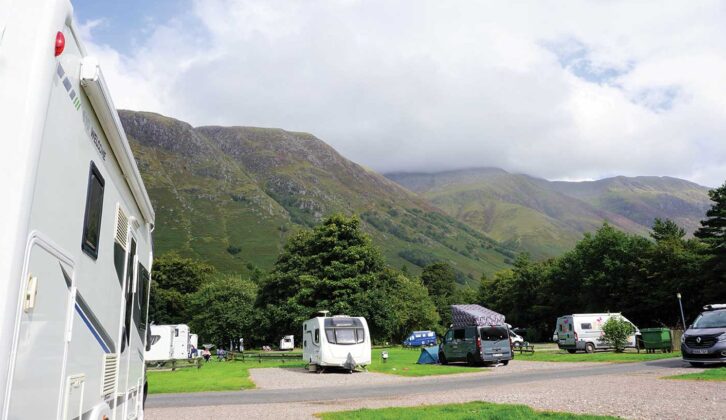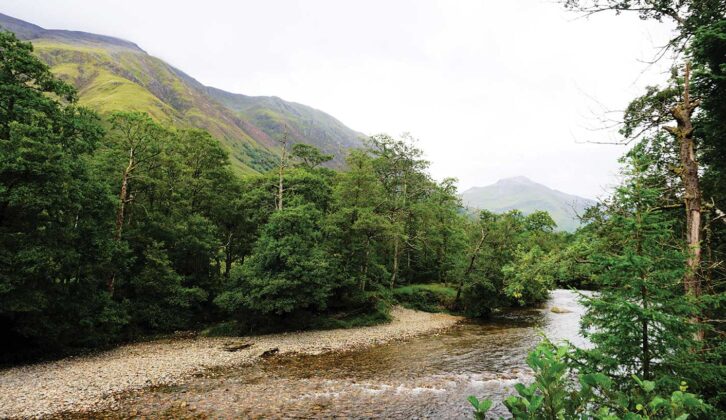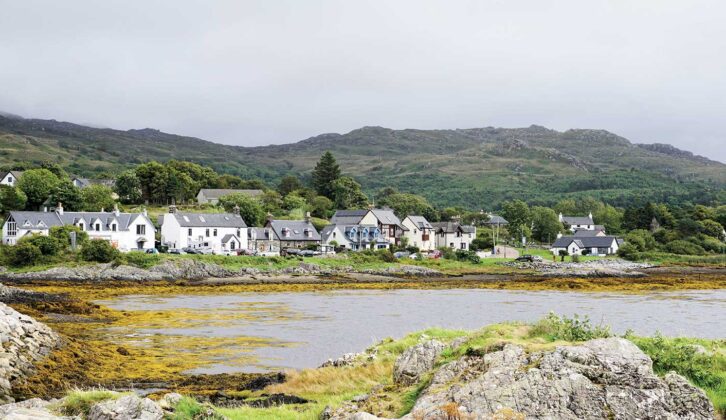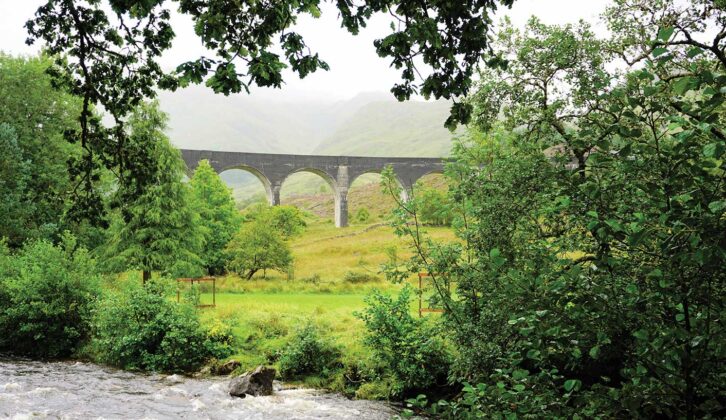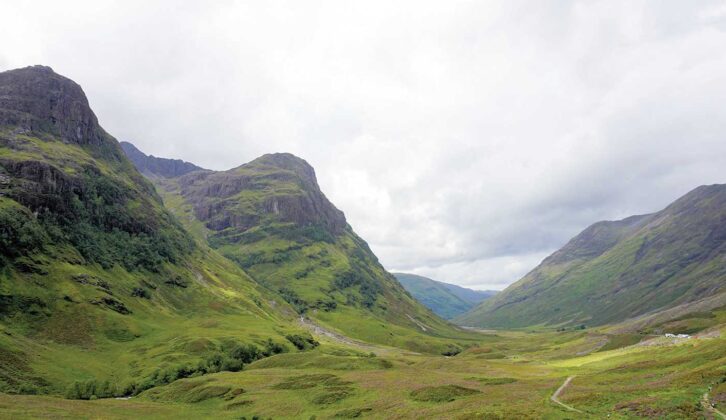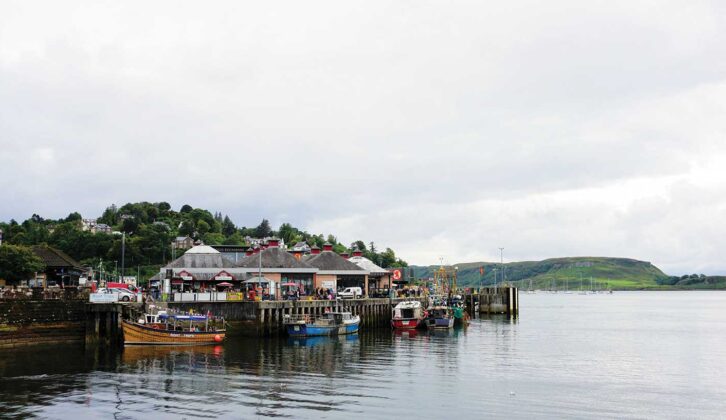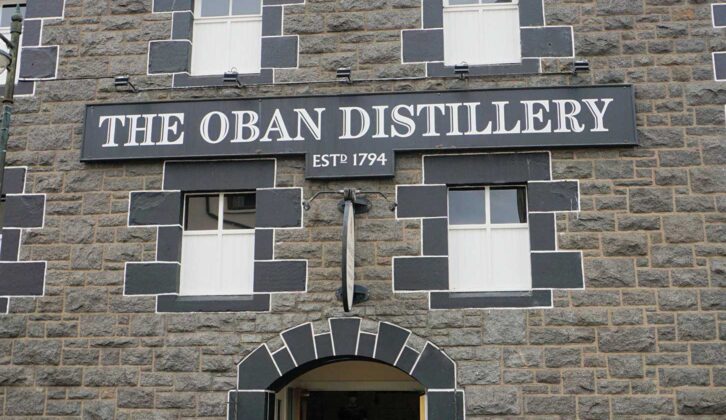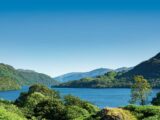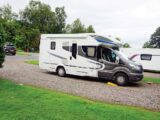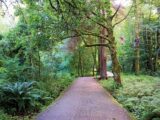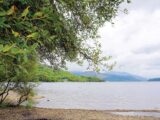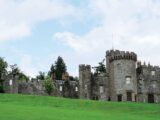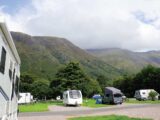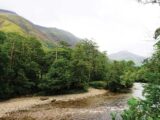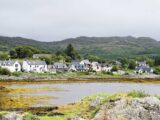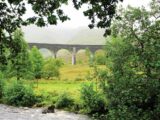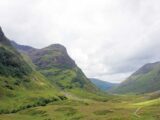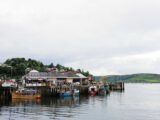Does it really get any more quintessentially Scottish than Ben Nevis or Loch Lomond? Well, maybe midges and heather. And whisky, mustn’t forget the whisky, very Scots. Which is why, on a trip to Western Scotland last summer, we decided we had to experience these (no, not the midges, but definitely a drop of the whisky!).
A river runs through it
Our adventure began at Lomond Woods Holiday Park on the southern tip of Loch Lomond, amid tuneless renditions of ‘The Bonnie Banks o’ Loch Lomond’ – singing is not our forte, but fun!
The best motorhome sites in Scotland provide the ideal base for exploring this beautiful country, and Lomond Woods Holiday Park was no different. This pretty campsite is just a stroll away from the small town of Balloch, and it was here that we spent our first afternoon. Not only is the town on the scenic shores of Loch Lomond (the largest inland stretch of water in Britain, at 23 miles long), it also has the River Leven running through it. From the riverside jetty, it is easy to hop on a boat for a leisurely cruise or catch the waterbus to explore further afield.
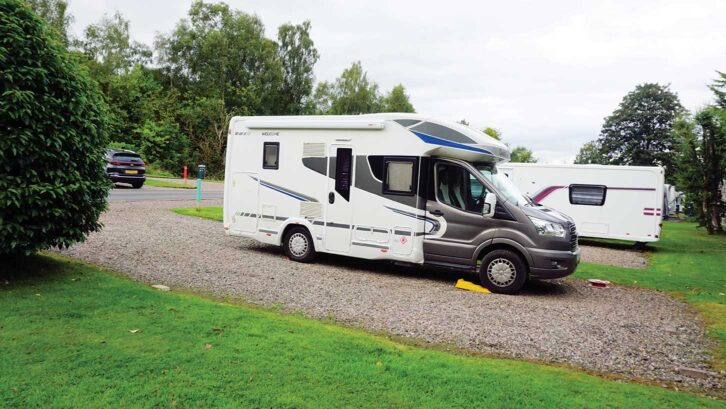
Despite the unseasonably miserable weather, we couldn’t resist – after all, the loch was the main reason we were here – and soon found ourselves sailing past Inchmurrin Island, one of the 33 islands on the loch, and seeing a very different view of Ben Lomond.
Back on dry land, we enjoyed a hog roast sausage roll to keep us going until dinner and a warming whisky at the Tullie Inn.
A wander around the town for the inevitable window- and gift-shopping completed a perfect introduction to the area.
As dusk approached and the rainclouds began to thicken, we retreated to our pitch for dinner, yet another enthusiastic rendition of ‘Ye’ll tak’ the high road…’ and an early night – must have been all that fresh air, absolutely nothing to do with the whisky, of course!
Bonnie banks
Next day, it was time to visit those bonnie banks. With the sky still threatening rain, we decided to take the 10-minute walk to Loch Lomond Shores. Here there are shops to browse, a couple of fast-food places and cafés, a sea life aquarium and a birds of prey centre.
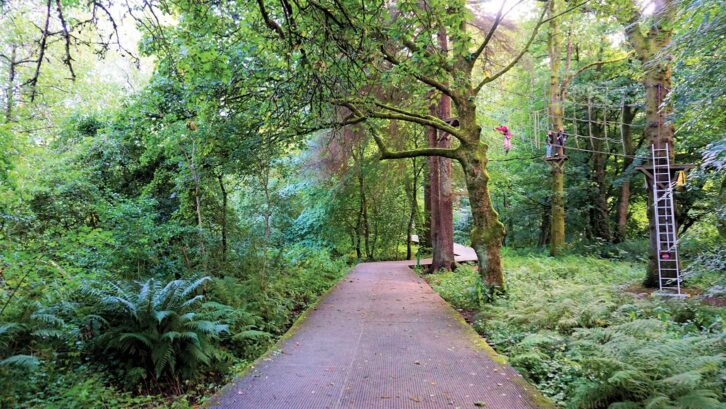
But again, we were here primarily for the loch and were happy just wandering around the charming shoreline and the woods, where there is more entertainment in the form of TreeZone for those who might fancy venturing up into the tree canopy.
Before long, we found ourselves on the beach beside the PS Maid of the Loch paddlesteamer, which is currently undergoing restoration.
Continuing along the shore and over the bridge, we followed the riverside path to Balloch Castle Country Park. The castle, on a hill overlooking the loch, was once the stronghold of a powerful medieval family, the Lennoxes, but a later version was built in 1808 and surrounded by gardens.
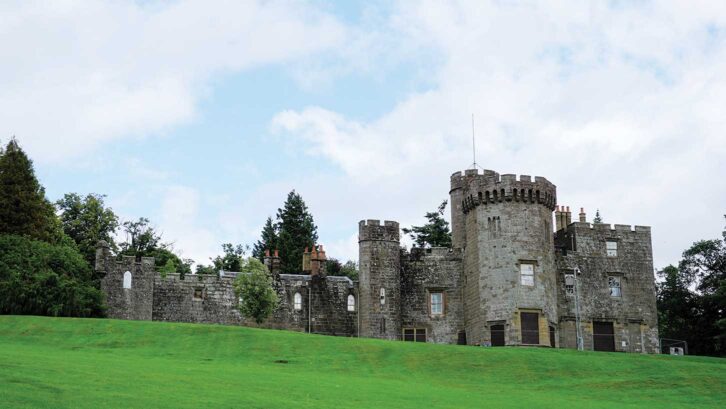
Down came the rain
It was here that the rain, which had so far held off, decided to drench us. So, after sheltering from the worst of the downpour, we beat a hasty retreat into town to console ourselves with a pint and a steak pie for dinner at The Balloch House.
With the skies still looking ominous next day, we decided to venture out on four wheels, ending up at Firkin Point. The trip took just 20 minutes, following the shore and wishing, very unusually, that there were not so many trees, so we could appreciate the views as we drove along.
Firkin Point is on the West Lomond Cycle Path and for those who fancy getting there on two wheels, I am assured that it is around an hour’s ride from Lomond Woods (although it’s always best to double-check the route before setting off).
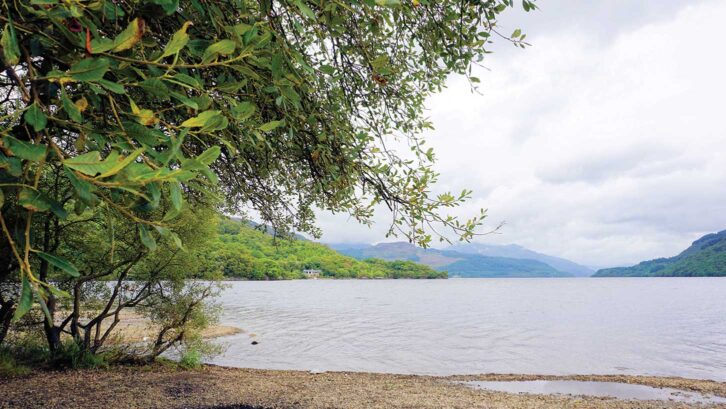
From the beach, there are great views across to Ben Lomond (on a sunny day at least!). There are also picnic tables and barbecue areas, but we were content to stroll along by the water, stepping over streams rippling down from the mountains and taking in those fine views, before hotfooting it back to the ’van as the rain returned – at least it was keeping the midges at bay!
On our way back, we called into the village of Luss. Again, this is on the West Lomond Cycle Path, and it also has a stretch of pebbly beach. There are a couple of boat cruises operating from here, which help to make Luss one of the area’s most popular destinations.
Our final evening in Balloch was spent sheltering from the rain and enjoying excellent fish & chips back at the Tullie Inn – they even did a doggy version for our pup, Willow!
Mighty Ben Nevis
With a fond farewell and a promise to return, we set off for that other icon of Scottishness (and the highest peak in Britain), Ben Nevis.
Where better to pitch up than at its foot? Glen Nevis campsite sits beside the River Nevis, with stunning views of the mountains and a 45-minute walk (or a five-minute drive) from the charming town of Fort William, on tranquil Loch Linnhe.
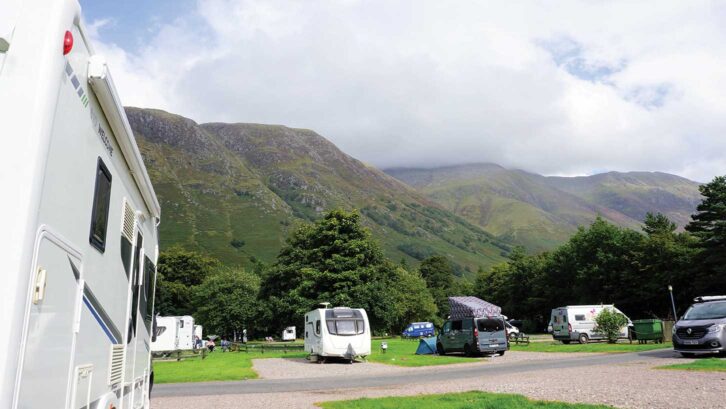
A reasonably large campsite, Glen Nevis offers scenic walks, a dog-walking field, and a restaurant which is also open to the public.
Sadly, we were no luckier with the weather here, though. We had planned to hike up to Steall Falls, one of the highest waterfalls in Scotland, along one of the mountain trails accessible from the visitor centre that is a 10-minute walk from the campsite (it has a car park if you are driving). However, given the decidedly wet weather and low cloud, we took the advice of the centre staff and stayed safely back at ground level.
We followed a pretty (but very muddy) path at the base of the mountain, largely tracking the river and crossing via a rather bouncy suspension bridge. Happenstance saw us crossing a stile five minutes from the 200-year-old converted barn that now houses the welcoming Ben Nevis Inn just as we were craving some coffee to fortify ourselves – what perfect timing!
Around four enjoyable hours later, thoroughly wet and muddy, we were glad of the hot showers at the campsite and the chicken curry I had left marinading in readiness back at our pitch.
Pizza and real ale
The next day, after breakfasting while admiring the view from the ’van window, we walked into Fort William to enjoy a wander around the shops and beside the loch.
After a look around the free-to-enter West Highland Museum, housed in a former bank and with interesting displays covering everything from the Victorian to the Jacobite history of the area, we couldn’t resist popping into the Black Isle Bar for a pizza and some real ale from their microbrewery – I know, it wasn’t particularly Scottish, but still very enjoyable!
A little later, as the rain stopped, we spotted our opportunity to visit the onsite Glen Nevis Restaurant. However, our time there was brief – dogs are not allowed inside and because it is almost on the banks of the River Nevis, the outdoor tables were plagued by midges.
After half an hour of swatting, with our pints finished and the sky darkening, we decided to beat a hasty retreat, grab a takeaway and enjoy our meal in the midge-free zone of our ’van.
Steaming the way through
The other thing on our must-do list was to follow the route of The Jacobite steam train, operated by West Coast Railways, which runs from Fort William to Mallaig. So next morning, we headed out along the A830. The first part of our trip shadowed the smaller, but no less pretty, Loch Eil. With spectacular views around every bend and a few impromptu stops, we found ourselves in the village of Arisaig. The steam train stops here, so we did, too.
Arisaig, on the shores of Loch nan Ceall, has glorious views out to the islands of Rum and Eigg. In summer, visitors can take a boat to the nearby islands or hire a kayak for an hour or two on the water, but we were on a mission to follow the steam train, and besides, the water was looking rather too choppy.
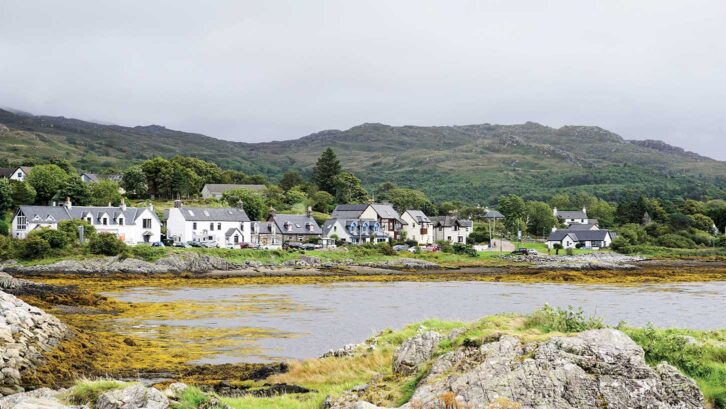
The town is blessed with white sand beaches, but we decided to move on and stretch our legs at nearby Loch Morar. Not only is this the deepest freshwater loch in Britain, it also has a monster tale that rivals the famous Nessie.
Monster Morag sadly stayed hidden (must have been the weather!), but we still enjoyed our walk before continuing the journey to the end of the line at Mallaig. After a look around this fishing port, where you can take a boat to many of the nearby islands, and walking up the hill for views over Skye, we grabbed a spot of lunch at one of the cafés dotted around town.
Retracing our route back to Glen Nevis, we stopped at the Glenfinnan Viaduct at the head of another loch – Shiel. The 21-arched viaduct is hugely photogenic, even on a rainy day, and was famously used in the Harry Potter films. There are a few walks here, but we decided not to venture too far through the mud and puddles – we’d already had enough of that! We did cross the road to see the Glenfinnan Monument, though. The monument was built in 1815 as a tribute to the many Highlanders who fought and died in the last Jacobite uprising, in 1745.
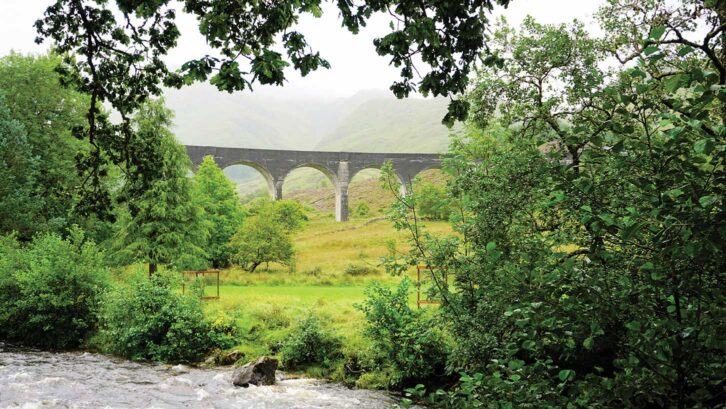
Later, we returned to the campsite, tired but happy to have seen so many icons of this region.
A Monty Python moment
Our quick tour of the embodiment of Scottishness wasn’t quite over, and next day saw us back on the road, following Loch Linnhe in the opposite direction, to the coastal town of Oban.
We stopped en route at the Castle Stalker View Café, at Appin. Needless to say, it does indeed have great views of Castle Stalker, a lovely ruin on a tidal islet in the loch. This was also used as a film set, for Monty Python and the Holy Grail. Then we enjoyed an outdoor lunch of Scottish scones, before carrying on to Oban.
Here, as well as the harbour, more great views and good shopping, is one of Scotland’s oldest (and smallest) whisky distilleries, in business since 1794 and the main reason for the existence of the town. What a shame we were driving and couldn’t take advantage of their bar or the free tastings on the distillery tour!
We did, mind you, come away with a couple of half-size bottles – well, whisky was another of those Scottish icons we were here to discover.
But one final iconic scene awaited us on the way home – a slight detour to drive through the awe-inspiring valley of Glencoe and the bleak, heather-clad Rannoch Moor. This place is hauntingly beautiful, and it is easy to imagine clan MacDonald fighting for their lives here during the Glencoe Massacre of 1692.
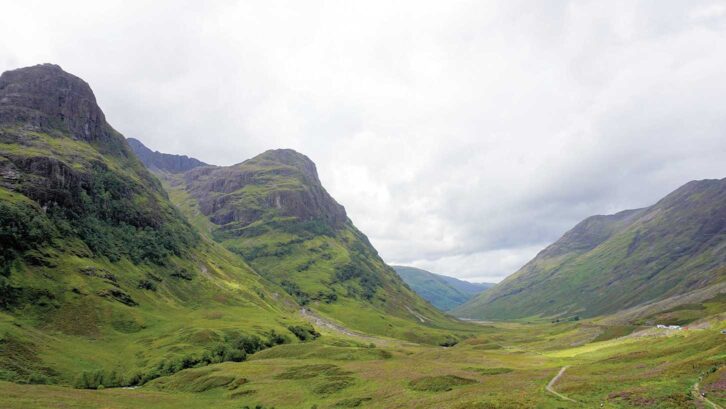
Sadly, we weren’t able to stop, but I have no doubt we’ll be returning to this very special place. This trip was one of my most memorable – scenic lochs and mountains, whisky and yes, midges, all combined to give us just a glimpse of some truly great Scottish icons!
If you’re looking for some more travel inspiration, see how Nigel and Kay Hutson got on when they embarked on a tour to Chatsworth. Alternatively, find out how Janette Sykes found her tour to Rutland, as she explored England’s smallest county.
When to go to Western Scotland
We visited in the summer, to experience some of the many famous sights in Western Scotland. Bear in mind that this is midge season, and you’ll need to pack suitable clothing and repellent. It is also wise to carry wet-weather gear!
Where we stayed on our tour to Western Scotland
Lomond Woods Holiday Park
A pretty stream runs through Lomond Woods Holiday Park. Some pitches are fully serviced, and facilities include games and laundry zones, and a children’s play area.
Find out more
- Loch Lomond & The Trossachs National Park
- Sweeney’s Cruises
- Loch Lomond Shores
- Balloch Castle Country Park
- West Lomond Cycle Path
- The Jacobite steam train
- Glencoe National Nature Reserve
- The Oban Distillery
Lead image: Getty
If you’ve enjoyed reading this article, why not get the latest news, reviews and features delivered direct to your door or inbox every month. Take advantage of our brilliant Practical Motorhome magazine SUBSCRIBERS’ OFFER and SIGN UP TO OUR NEWSLETTER for regular weekly updates on all things motorhome related.
